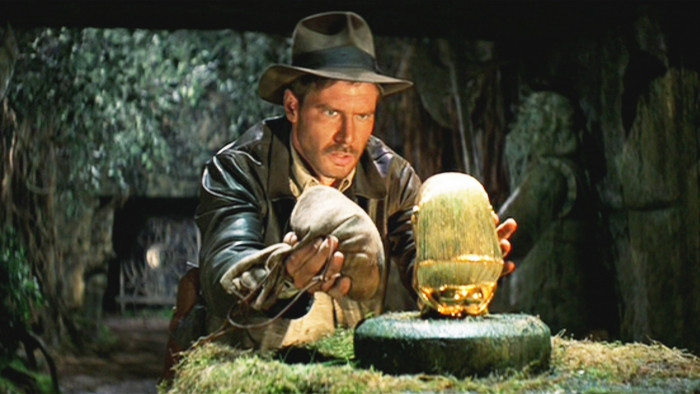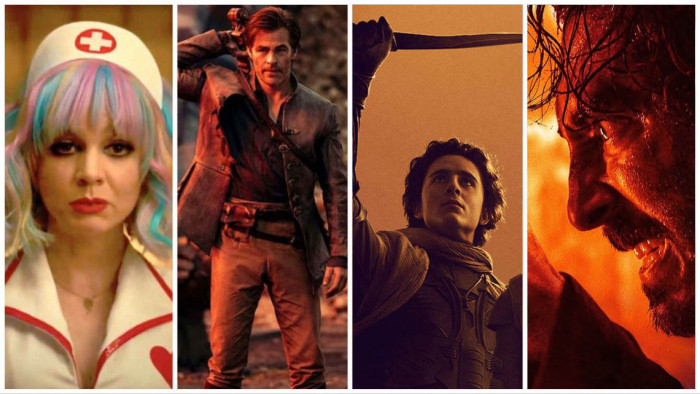We Went Skiiing with Eddie 'The Eagle'
Eddie ‘The Eagle’ Edwards has been immortalised in a new film. Andrew Dickens says there could be no worthier subject.


Eddie ‘The Eagle’ Edwards has been immortalised in a new film. Andrew Dickens says there could be no worthier subject.
There is an episode of The Simpsons in which Homer takes an all-you-can-eat restaurant to court, after they throw him out for eating too much. He asks his lawyer, the never-reputable Lionel Hutz, if he has a case.
“Mr Simpson,” says Hutz, “I don’t use the word ‘hero’ lightly, but you are the greatest hero in American history.”
Funny. However, when I say that Eddie ‘The Eagle’ Edwards is one of the greatest heroes in British sporting history, I am deadly serious. And I don’t use any words lightly.
Yes, the same Edwards who finished last in both individual ski-jump events at the 1988 Winter Olympics in Calgary; the clown with the under-bite, milk bottle bins and a technique less Flying Finn, more flying to a grisly finish. Britain’s most celebrated loser. You get the picture: it’s one that a new film, Eddie The Eagle, aims to adjust. About time, too.
“It’s a chance to throw a light on Eddie’s story,” says the film’s director Dexter Fletcher. “Maybe people think of him as a buffoon, a self-deprecating joke about England coming last in a sport we had no history with, when he’s actually a pretty determined Olympian. Eddie never set out to become a celebrity, he just wanted to ski-jump.”
HIGH FLYERS
The story was good enough to attract the likes of Hugh Jackman, Christopher Walken and, as a surprisingly convincing Edwards, Taron Egerton to the cast. Fletcher uses a ‘version’ of events to give audiences the Essence d’Eddie: determination, optimism and bravery bordering on the silly.
The man is an inspiration. I know this, because I once was sprinkled with Eagle dust.
‘Jump’ back to last December and the swanky Austrian resort of St Anton. Here, Edwards – now 52, fit as a fiddle, agile as a cat, his jaw less jutting after surgery – had been my personal hero. You don’t often have an Olympian bow before you, but Edwards was bent double at my feet – my skis, to be precise – guiding their tips in my first skiing lesson. It went well, in no small part thanks to this prophet of positivity’s laying on of hands. Doubts abated, fears quashed – I believed, Eddie, I believed.
“I’ve always had it,” Edwards tells me afterwards, over a coffee and biscuits (Edwards, it turns out, is the biscuit-lover’s biscuit-lover). “I was a really stubborn child. Then it’s called stubbornness, as an adult it’s called determination. The worst thing that somebody could say to me is, ‘You can’t do that.’ I just think, ‘I’ll show you, you bastard.’
“I used to watch the Olympics and think how exciting it would be to perform in front of the crowds and compete for your country. I was about eight years old [when the Olympic dream began], but I didn’t know I was going to do it skiing. Then I went on my first ski trip when I was 13, and after that, all I wanted to do was ski. I’d be up Gloucester ski centre all day Saturday and Sunday.”
Edwards, as I’ve witnessed, is a beautiful skier. So good he narrowly missed out on a place in the 1984 Olympic downhill squad. And here’s where that determination kicked in. Most ski-jumpers learn from the age of five or six. In 1986, just 20 months before Calgary, the 22-year-old Edwards decided this potentially fatal sport he’d never done was his ticket to that Olympic dream.
“Other jumpers progress gradually,” he says. ”The 10m jump, then, after a year or so, the 15m, the 20m, 30m and so on. I started on 15m, was on the 40m the first day, and within five months I was jumping off the 90m [explaining the distances is a feature in itself – in short, they’re all terrifying]. It was extremely scary: the height, the speed. At first, I just wanted to land as quickly as possible.”
DOWNS AND UPS
There was no funding for a Cheltenham plasterer (still his day job) whose most pressing ambition was, as his regular pre-jump prayer went, to “come through this intact”. Edwards did odd jobs, slept rough, wore ill-fitting equipment and relied on the charity of coaches. He had a helmet that flew off mid-jump and glasses that fogged up, meaning he often jumped near-blind. After borrowing his mum’s car to tour Europe in an attempt to qualify for Calgary, the moment he found out he’d succeeded is well documented, but worth repeating.
“I was in a Finnish mental hospital when I got the news,“ he says. “I’d been invited to train with the Finnish team and I had nowhere to stay, so they put me up there. The letter from the British Olympic Association arrived at home and my mum opened it. I was screaming the place down. They must have thought I was a real patient. It was a dream.”
The dream soon turned surreal. He famously came last in both the 70m and 90m events, but he did complete successful jumps, setting British records not just for distance, but good old pluck. This, combined with his slightly comic appearance, brought him huge celebrity. Within hours of his triumph/failure, he was on The Tonight Show Starring Johnny Carson. Press conferences were held just for him. He even got name-checked in a closing ceremony speech.
“My feet didn’t touch the floor for, gosh, three or four years,” says Edwards. “I was flying all over the world, opening shopping centres and golf courses, meeting movie stars and bands. Earning £10,000 an hour to open things, getting four or five marriage proposals every day. It was strange, but fun.”
It was all too much for some. Long before media training turned football’s post-match interviews into an automated phone system – press 1 for disappointed, 2 for delighted, 3 for it all being about getting three points – the International Olympic Committee decided that sport didn’t really need fun. They introduced what became known as the ‘Eddie the Eagle rule’, requiring all Olympians to be in their sport’s top 30 per cent or top 50 competitors, whichever is fewer. Despite trying in 1992, 1994 and 1998, Edwards would never qualify for another Olympic Games.
“The British Ski Federation could’ve blocked it,” he says. “They could have said, ‘No, Eddie does a really good job promoting the sport.’ But they didn’t object. There was a lot of snobbery back then. The British Ski Federation was very,very difficult to deal with. It was like an old boys’ club.”
THE HERO HURTLES
The rule shouldn’t be his legacy. Edwards wasn’t some chancer throwing himself down a ramp and hoping not to die. OK, the latter part is accurate, but that goes for any jumper. Months after Edwards steered my legs and ambition in Austria, I find myself at the top of the 120m jump in Planica, Slovenia, watching the national team train. This is a country where ski-jumpers are flying gods. By chance, I meet Miran Tepeš, who competed for Yugoslavia in the Calgary Games. I ask what he thought of Edwards at the time.
“He was one of the jumpers, our friends,” says Tepeš. “He was a very positive person, spreading interest in ski-jumping around the world. I have respect for anyone who jumps. I know what it takes to go over the larger hills. There’s a select number of people who can do it. You need a certain bravery. You must fight your fear, and for somebody who starts later, this obstacle is even higher. Edwards had a huge disadvantage.”
Respect is something Edwards lacked from other quarters. It’s the second emotion I experience up here, following panic. Anyone who thinks there’s anything comical about ski-jumping is welcome to have a go. It won’t just be their head that needs examining.
“He’s incredibly brave,” agrees Fletcher. “The jumps are f*cking high. It’s really scary. And we were all strapped on with wires when we filmed. When Taron got up there, he went, ‘This is f*cking insane.’ Eddie’s just got this self-belief. It’s refreshing to be around. When he nearly made the downhill team, he didn’t just go, ‘Oh, f*ck it.’ He found another way of getting there.”
See, the man is a hero. Heroism isn’t just about medals and titles. It’s about shoving yourself to the limits of your ability, and beyond, to defy expectations and odds. It’s about sleeping in a mental hospital, or leaving your mum to get the bus everywhere. We can’t all win, but we can all be heroic.Disagree? I know a man who’ll change your mind.
Eddie The Eagle is in cinemas now.

SOARING LIKE AN EAGLE
Andrew Dickens tries his hand at ski-jumping. Sort of.
My heart pounds like the opening bars of Queen’s Flash. My hands grip the wooden bench beneath my tightened buttocks as if my life depends on it. To my knowledge, it might. Ahead of me is a 30m ski-jump. The figure means nothing to me; the fact that people at the bottom of it look so tiny, does.
I’m in Slovenia, where ski-jumping is the No1 sport by some distance (must stop thinking about distance). I came to attempt the stupid, if not impossible: to experience ski-jumping, to gauge Eddie Edwards’ sheer guts and/or insanity.
Just a little jump would do. Sadly, heavy snow put paid to that on safety grounds. Luckily, my ‘coach’ and former international jumper, Branko Iskra, had an alternative: the BohinjSki Flyer, a 310m-long zipline that replicates the feeling of ‘flying’ in skis, and the only one of its kind in the world. And here I am.
I say luckily, but I’m acrophobic. I once had to crawl on all fours down the steps of La Sagrada Familia. This slope is jumped off by 10-year-old Slovenian kids, but I don’t care; it’s awfully high, and how do I know the wire will hold me? Most ski-jumpers are short and light – I am neither.
My fears are, of course, irrational. Propelled by shame, I push forward and slide down the ramp, before being prised away and speeding at 60kph along the line. I remember my pre-jump lessons: skis up to avoid drag, a V-shape is best, arms back and lean forward. My form is more dead duck than eagle, but I’m flying! Past the people on the ground, past the world record of 251.5m, to a tower, where I flounder around in my skis and too-tight rubber suit.
I go back for more.
For more information on visiting Slovenia, slovenia.info; to try the BohinjSki Flyer, bohinjski-flyer.si
Latest
Related Reviews and Shortlists


The 10 best war movies of the 21st century








